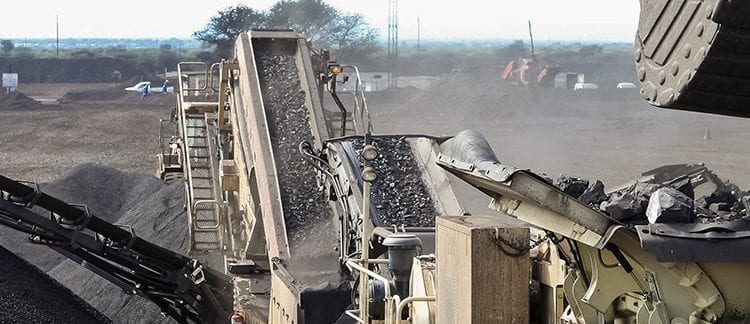Manganese is a brittle, hard, gray-white metal that looks similar to iron and is widely distributed in the Earth’s crust. Most manganese is consumed by the steel industry, though it is also used in batteries, chemicals and more. The manganese space has struggled in recent years, experiencing a slight reprieve in 2016 when prices trended higher. In 2017, the critical metal surprised market watchers who though it would perform better than it did. While the manganese price began the year by trending up, by March it had peaked; it proceeded to decline steadily for the rest of the year.
Despite that fall, manganese producers fared well in 2017. “Although there was the ever-present prospect of contract reneges and price crashes, 2017 was an unprecedented year for producer profits,” according to Metal Bulletin. The metal stabilized at the end of the year after some ups and downs. Since then, manganese market participants have remained cautiously optimistic about the metal in 2018 and beyond. Read on for a brief overview of manganese supply and demand dynamics, and for a look at why the metal could be a compelling investment choice in the coming years.
Manganese Industry: Supply and Demand
As mentioned, the steel sector accounts for most manganese demand. In all, the industry consumes 85 to 90 percent of manganese, using it as a deoxidizing and desulfurizing additive and as an alloying constituent. Among other things, manganese can improve the strength, toughness and stiffness of steel.
Steel sector strength was a key driver of the manganese price last year, and continues to influence demand. Manganese consumption directly related to the steel industry increased slightly year-on-year, thanks in part to countries like America, Japan and China.Of course, manganese has other applications as well. The battery space is the second-largest consumer of manganese today, and many market watchers believe that demand from this sector could be set to increase in the future.
Manganese dioxide has long been used as a depolarizer in alkaline batteries, but this is not the manganese battery market that is currently the most interesting. Instead, attention is being drawn to lithium-ion battery chemistries that require manganese — these include lithium-manganese oxide batteries and lithium-nickel-manganese-cobalt oxide batteries.
In these batteries, electrolytic manganese dioxide is used as a cathode material. Many investors who believe that battery sector demand for manganese will increase are optimistic that lithium-ion batteries that require manganese will become more common in the future.
“[We] see significant growth in the manganese market due to its applications in clean energy. More specifically, we anticipate the growing use of nickel-metal hydride (NiMH) electric vehicle batteries and lithium-ion (Li-ion) batteries to be major catalysts for manganese demand,” says one research firm.
As mentioned, manganese is also used in chemicals, such as fertilizers and animal feed. Click here to learn more about manganese applications. Looking at supply, major producers of manganese include China and Australia, as well as South Africa, which holds 80 percent of the world’s reserves. Global manganese production reached 16 million MT in 2017, a slight increase from 2016, according to the US Geological Survey.
All told, the market for manganese is projected to reach 28.2 million MT by 2022, driven by rising investment in infrastructure development projects, growing automobile production and rapid urbanization in emerging markets.
Manganese Industry: How to Invest
Investors looking to jump into the manganese market may find it challenging to get exposure to the metal. While a number of large companies do produce some manganese, it is difficult to find major producers of manganese that are not listed privately. Big companies that have some exposure to manganese include: South32 (ASX:S32), Eramet (EPA:ERA), Anglo American (LSE:AAL) and Vale (NYSE:VALE).
Investors interested in smaller companies may want to look at manganese juniors. A few are listed below — all trade on Canadian, American or Australian exchanges, and all had market caps of above $5 million as of August 20, 2018:
American Manganese (TSXV:AMY)
Giyani Metals (TSXV:WDG)
Manganese X (TSXV:MN)
MaxTech Ventures (CSE:MVT)
Element 25 (ASX:E25)
This article was originally published by Investing News Network. You can read the original version here: https://investingnews.com/daily/resource-investing/battery-metals-investing/manganese-investing/investing-manganese-industry/












